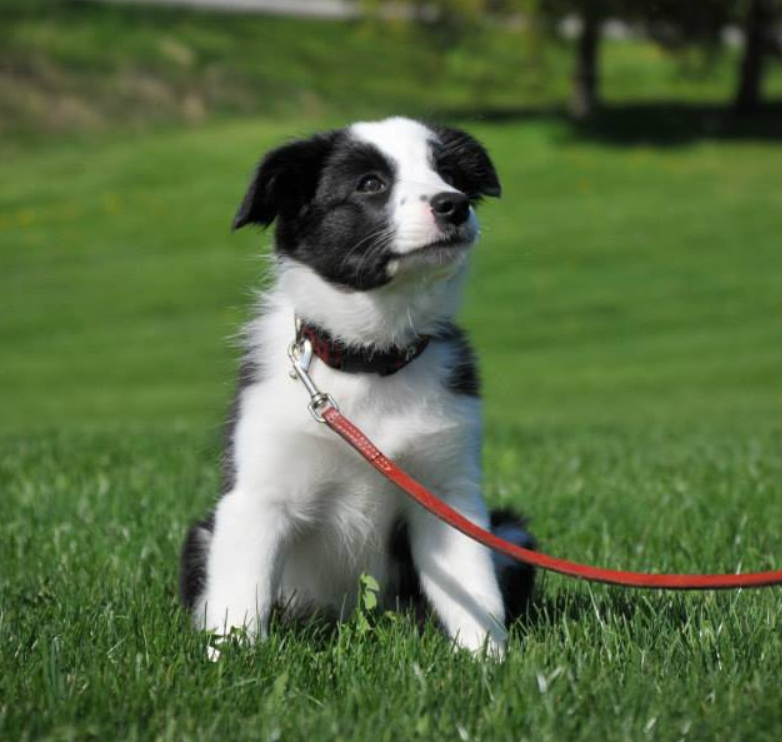 The topic of housetraining is one that comes up many times a day the world over when a new puppy or rescue dog joins a home. As it’s a question we see a lot, I thought I’d do a blog post with the inside scoop on potty training. There is a lot of information out there in cyberspace on ‘housebreaking’. Let’s face it, we don’t really want to ‘break’ our puppy or dog, so my top tips focus on the details that start good habits early and will benefit the relationship you will have with your dog.
The topic of housetraining is one that comes up many times a day the world over when a new puppy or rescue dog joins a home. As it’s a question we see a lot, I thought I’d do a blog post with the inside scoop on potty training. There is a lot of information out there in cyberspace on ‘housebreaking’. Let’s face it, we don’t really want to ‘break’ our puppy or dog, so my top tips focus on the details that start good habits early and will benefit the relationship you will have with your dog.
The Poop on Planning
Prior to bringing home your puppy consult with your breeder (and mark down) what has been the puppy’s normal routine for feeding and pottying. If you have a rescue puppy or dog, try to find out as much as you can. Once home, take a few days to gradually change that schedule to better suit your own timetable.
Predictable patterns anticipating the puppy’s need to potty will help to prevent accidents. Try and organize yourself to take the puppy out prior to the scheduled time. Most puppies will need to go out: once they wake up, immediately after a meal and another hour after that, after a big play session with you or another puppy and immediately after a swim. Think about restricting access to water 2 hours prior to your bedtime to avoid having to get out of bed in the middle of the night for a restless puppy.
Learn what is normal for your puppy. “Feature” is a two spot peeer and she always has been, right from the day I got her at 7 weeks old. I had her checked for a bladder infection because I thought it was strange. What I had to learn was that was “normal” for her. Learn what is normal for your puppy.
Start Good Habits Early ~ A Simple Yet Effective Investment of Your Time
A simple, but not necessarily an easy lesson, is teaching your puppy to “potty” on leash. For the first 5 or 6 months of my puppies lives, I take them out to pee or poop on leash.
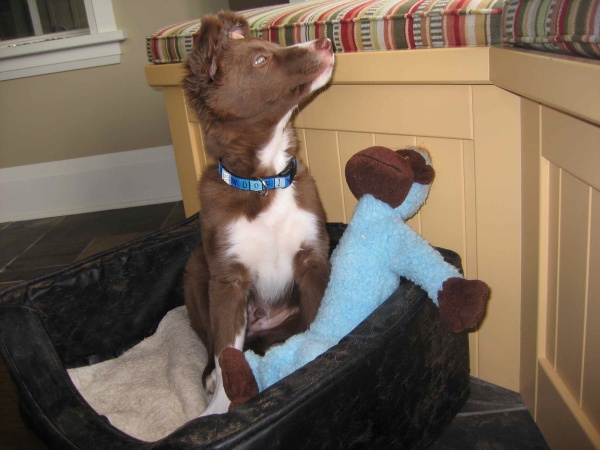 Not only does this encourage the puppy to seek out a particular area of the yard of my choosing to do her business, but most importantly, it teaches her it is a good thing to urinate and defecate while on leash, close by to me.
Not only does this encourage the puppy to seek out a particular area of the yard of my choosing to do her business, but most importantly, it teaches her it is a good thing to urinate and defecate while on leash, close by to me.
This means that I am not going to be one of those people at an agility trial (or anywhere away from home) out on a rainy night walking my dog back and forth on that tiny strip of grass at my hotel, begging and pleading my dog to pee or poop on leash!
Although this lesson is a simple one, it isn’t necessarily an easy one. For anyone with a fenced in backyard, it may be much easier to just turn the puppy out off leash to work things out in his own time rather than stand around waiting for a leashed puppy to do his business. However, every behaviour has a consequence. Choosing to save a little time, taking the easy road with puppy today, means you will likely be wasting a great deal more time waiting for an adult dog to eliminate on leash tomorrow!
Sleeping Through the Night ~ “Don’t Wake Da Mama”
My dogs are raised with the understanding of the night time golden rule of “Don’t wake da mama!”. I establish this by making sure any time a puppy wakes me up, it is as uneventful as possible.
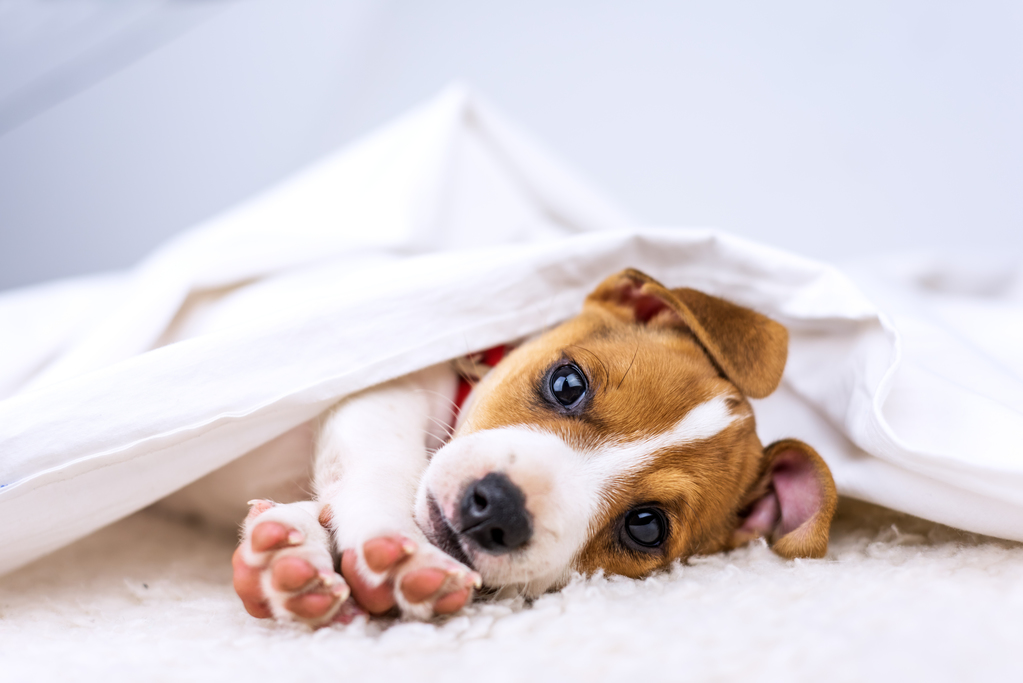 When I get a new puppy, I put her in her crate on top of a chair beside my bed at night. This way she sleeps right near my face. She can hear me breathe and practically feel my breath. As we both fall asleep, I stick my fingers through the crate door for a few minutes. I have never had a puppy cry or fuss at night, plus I get to fall asleep looking at my beautiful new puppy!
When I get a new puppy, I put her in her crate on top of a chair beside my bed at night. This way she sleeps right near my face. She can hear me breathe and practically feel my breath. As we both fall asleep, I stick my fingers through the crate door for a few minutes. I have never had a puppy cry or fuss at night, plus I get to fall asleep looking at my beautiful new puppy!
If the puppy conveys the need to go out I say nothing… I reach in and then I carry her outside to see if she needs to relieve herself. I do not allow the puppy the reinforcement of walking on her own. This is also the only time I do not interact with my puppies after they have pottied outside. I may quietly praise her, but I say very little and offer no other reinforcement as I pick the puppy up once again, go inside and return her to her crate without further interaction.
Making these midnight trips outside as uneventful as possible helps to make sure they do not happen very often. With my all of the puppies that I have raised, it has been rare that any one of them ever wakes me up more than one or two nights before they learn to sleep through the entire night.
This routine is to downplay the reinforcement the puppy receives for waking you up at night. Most puppies should learn bladder basics within a week or two. If this isn’t your puppy make a chart of each time the puppy pees or poops so you can start to predict future events.
For these late evening potty trips, I use an oversized leash and clip it around the width of the collar so I don’t have to get a tiny puppy lead clip onto a tiny puppy collar ring.
I’ll share more on puppy sleeping arrangements and daytime routine in another blog.
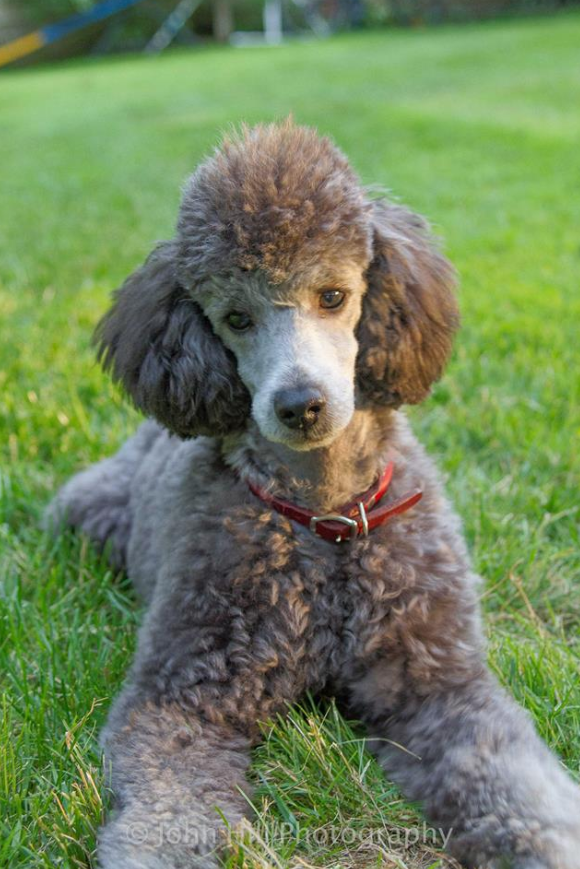 The Poop on Naming the Action
The Poop on Naming the Action
Take the puppy on leash to the exact spot in the yard you would like him to continue using. Choose a word or phrase that you want to use in the future to prompt him to start doing his business. Wait until the puppy starts to eliminate and then quietly repeat your new cue over and over while he pees.
You can choose a single word like “potty” or “duties” or a phrase such as “hurry up” or “do your business”. For the first couple of weeks, you can add a tidbit of a treat after the puppy is done his potty. Play time can follow each time as well as a fun reward (but only during waking hours!).
The Poop on Roadside Stops
Some dogs like to defecate a long distance away from you, others may prefer long grass. I recommend you don’t facilitate those puppy desires because there will be times when you do not have the option of removing your dog’s leash to let him run away for his poop. Get him used to a new routine. Start as soon as the puppy comes home and clip him on leash every time you take him outside on so that he learns he can do his business on leash, with you close by any surface that is handy.
Housetraining Effort Now = Future Joy for You and Your Dog
So there you have it, my top tips for housetraining your puppy or dog. Following these tips now will ultimately lessen the frustration of a dog who has ‘accidents’ in the home, or who ‘won’t potty on lead’ …. the things that might annoy or even anger you as your puppy grows.
Getting to know your puppy’s potty schedule and what is ‘normal’ for your dog will help you notice any changes that may be important for your dog’s health.
Putting in the effort now will bring you many rewards in your life with your dog. Let me know in the comments your top tips for housetraining.
Today I am grateful for everyone who considers their dog an important member of their family.
Update: I also have a podcast on the topic of potty training and you can listen, watch the video and get the transcript at the link below:
Potty Train Your Puppy in a Week (Easy 3 Step Process)
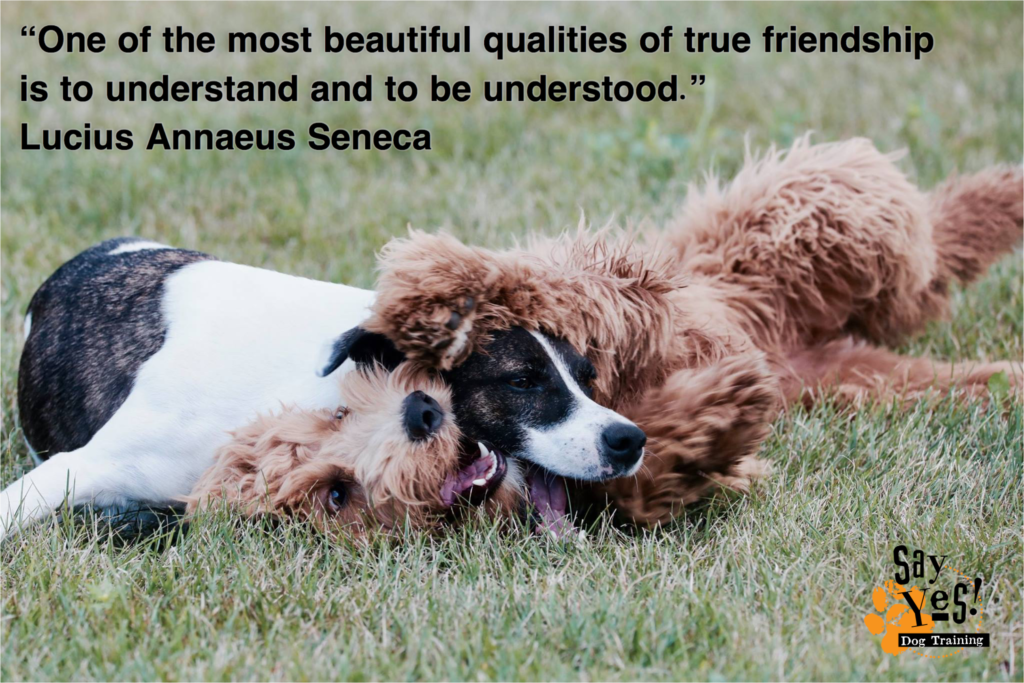


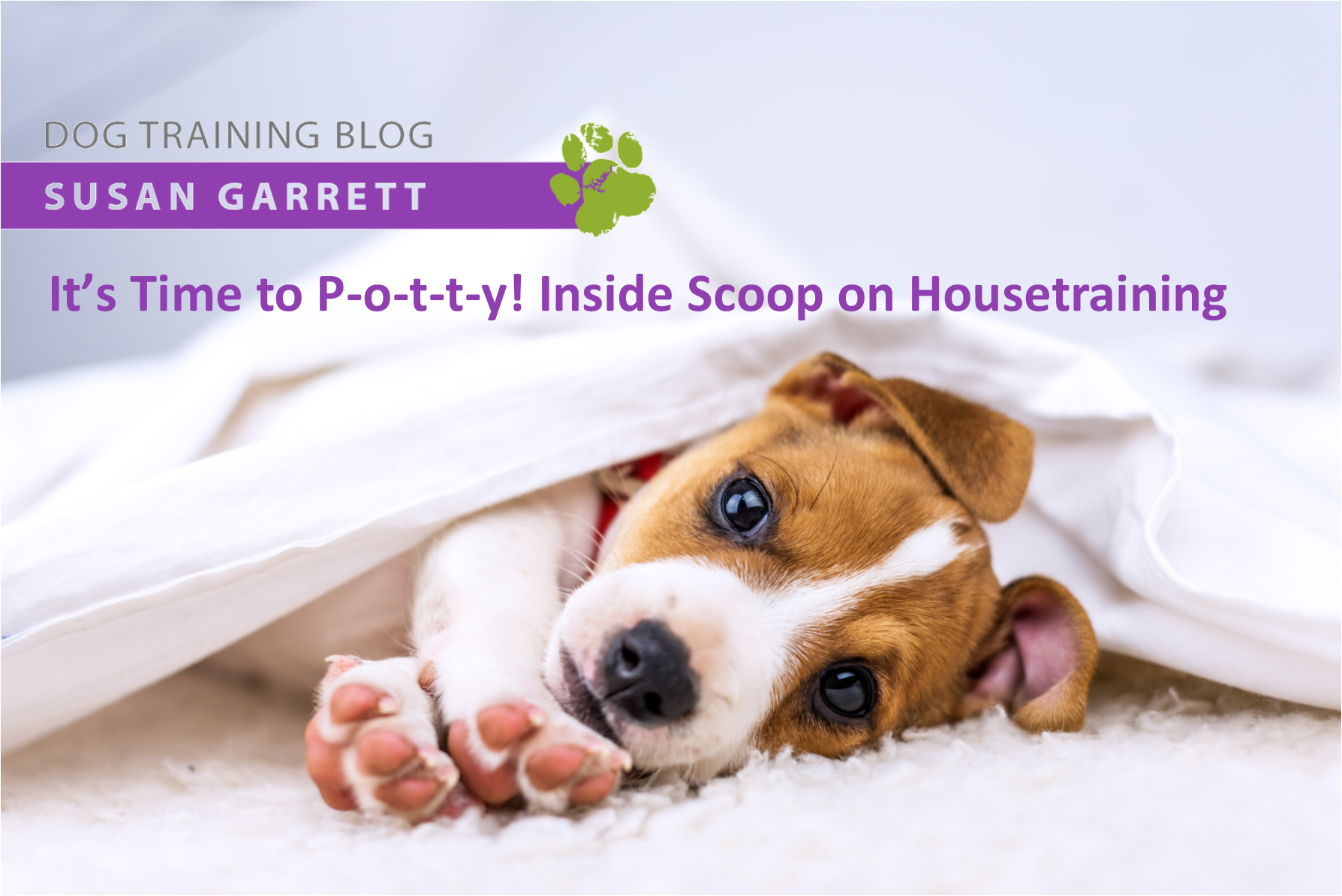


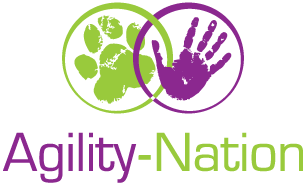

Arrggghhh!
After two weeks of an impeccable elimination routine, my year old rescue shepherd had two out-of-the-blue accidents in the house. Peed a bit yesterday, and this morning, a few minutes after our long morning walk, she both pooped and peed.
She had JUST finished “going” and I couldn’t help but say “bad dog!” in a scolding tone and now she’s in a sulk . . . probably picking up my mood as I cleaned up. (Nature’s Miracle, steam mop, bleach, steam mop.)
This is really dismaying and puzzling. Our routine allows plenty of chances to “go:”
Wake up 5:00 am.
Breakfast kibble at 5:15 am
First walk (1.5 – 2 miles) 5:30 am
Kibble on a snuffle mat around 8:30, when I have breakfast.
10:30 am or so, maybe 11 am, another LONG walk. Enough to get to 10K steps.
One or two walks in the afternoon (to get mail, or around a shopping center).
Long evening walk, sometimes another 2 – 2.5 miles.
10 pm, final walk around the block.
I always give Daphne a “good girl” when she pees or poops.
We have 2 -3 short training sessions during the day, and 3 -4 ball or squeaky toy or rope pull sessions.
Any ideas or support appreciated.
Hello
I caught my 11 month pup weeing/ marking inside after months of him only going outside.
This has also coincided with him weeing /marking frequently on walks.
Help! I have a 7 month old Lhasa Apso. She is crate trained and has not woken us up during the night to go potty since the 3rd day home w/ us. She is adorable and sweet. That being said, the peeing and pooping in our house is wearing on me. She is in a somewhat larger crate in the living room during the day and I have been paying a neighbor to come let her out at lunch time because she had a couple of accidents in the crate during the day. She has been reliable for weeks at going to the back door and scratching when she has to poop, but the pee notification has been an epic failure. And now all of the sudden we had 2 poop accidents in the house which like I said hasn’t been an issue for 6 weeks or so. We do not have a fenced in yard, and I/we leash her and take her to a specific place to go. In the last couple of days or so she doesn’t seem to want to go back there. I love her dearly, but am so over the messing in the house. I cannot believe we have had her for 5 months now and are still struggling with this.
What do you mean by crate trained?
When the occasional accident does happen (and it will happen), how should we react? There are so many different opinions whether you or not you should express discontent with the “oops I messed up”, whether or not you clean it up in front of the dog, etc. I can and do have so many successes with my puppy and then all of a sudden I see a mishap on the floor.
Susan answered my question on the Potty Train Your Puppy in a Week (Easy 3 Step Process) Podcast above. Thank you!
I have a 4 month old pup who goes to potty on leash. Suggestions as to how to transition him to pee/potty on concrete. We get a lot of rain and have a covered patio … he refuses to potty when I take him. Currently we take him out on leash in our grassy area and he searches for a spot before either peeing or potty.
Have an 11 week old puppy .I’m trying to follow th method in the video to get her to sleep through the night !
She lasts until 5.30 or 6 a.m. she has peed in crate so when do the lift .no talk .etc I can be out for over 5 mins and she doesn’t do anything ..then put her back in crate ..she whines for a wee while then goes quiet ..should I try 10 mins later at that time in morning ..or try to leave her until 7 ..7 30 ish when I normally get up .how can I stop her wetting in the crate ..The crate is in ad different room ..
11 weeks old puppy in a different room 🙁 Susans podcasts say the opposite, that you shuold have it in same room. Maybe you didn’t hear when she whimpered to get out? It is very rare for them to pee where they sleep. If the crate is too big and doesn’t have a divider you can put a box on one side. If it doesn’t need to pee, maybe it is waking up from anxiety of being in another room? When my puppies (even when in same room) “wake da mama” (susan G saying) and I know its not a pee. I reach in a cover with fluffly blanket and they pass right out. Also they have warmy puppy buddies that are warmed before sleeping and in the very beginning stages of trying to get a sleep through the night, on occassion I would rewarm the beanbag. One thing I know makes them wake way too early is if you let them under the covers to sleep with you first thing in the morning. They will just keep waking up at all hours for that (or anything that makes them think it’s morning. Check out SGs podcasts about being unredictable, “the thing befroe the thing”.
My dog always poops in the agility ring in the first run, even though I’ve taken her out and used the ‘command’ beforehand. She also does it in training. How can I stop her doing it?
During the day the crate is in the kitchen but during the night i take it upstairs to the bedroom. Is it possible to take the puppy out to potty in 2 different places? At night on the bedroom terrace and during the day in the backyard?
I would venture to say yes. I imagine your terrace is concrete or tile. You can add a potty area receptacle tray. Ideally you will add to this tray the same substrate your dog is expected to potty on out in the yard. This set up is rather common in a whelping box. It’s also rather common in high-rise apartment buildings. I saved myself a couple of YouTube videos on the subject for future reference.
HELP. My puppy is 15 weeks old. He knows the command “crate” and loves running in to get the treat but comes out so fast I have no luck teaching him to sit calmly “in the crate”. He comes out and sits calmly near my feet.
He is very small (5lbs) and I bought a crate for his current size. I picked a crate in which he can sit , lay down and easily turn around but I can’t get my arm through the door and see what is going on to teach him to sit calmly inside. I feel if I move to a larger crate he will not hold his bladder. (He has been with me for 2 weeks and has never soiled the crate. I get him up every two -3hours to go out at night. 2 nights ago he slept for 4 hours in a row.)
Never heard of a “two spot peer” before but I am relieved to hear there is such a thing. My 4 month old puppy is one of them. So glad to hear that it is “normal”.
I have a 10 month old Havanese/poodle mix rescue, Sassy. From the time she was 3 months old until about a week ago, she was perfectly house trained. Suddenly, she has been pooping/ peeing in the house but only in the evening. It almost seems like she’s afraid to go out in the dark ( it’s dark here at about 5 pm). She has been using a doggie door to a fenced in yard. Should I start taking her out on leash for a while? Or I could leave the light on over the play yard. I never heard of a dog being afraid of the dark before!
My maltipoo will potty outside then come back in and potty again.
The breeder told me she begins litter box training the pups before the release. Do I need to transition Beau from this or can I just bring him home and house train by taking him out at proper intervals. I really don’t want a litter box
I like how you finish each post with a gratitude.
Thank you for the information. I found it very helpful and informative.
My daughter just got a golden doodle from a family that could not keep him. He is 5 months old and is doing well at potty training . He rings the bell when he needs to go out but if he is in his crate at night or when they are gone he will pee in it. They have decreased his space but he just lays in it. Is there any hope for him.
Thanks this is helpful…thinking of getting a puppy with my younger pup being 7 1/2 & although we’ve never had a problem it’s good to have some fresh ideas.
nice work, keep up the good work.
really appreciate your work.
Hi, I would like to have an advice because I am sure I have done wrongly with my puppy.
When he got home he was very good sleeping at night. But after he had a upset tommy he started waking up at 4:30 am to eat.
I feel guilty not given him anything to eat but on the other hand I really want to change this habit.
Thank for your attention.
Kely
Our French Bulldog turned 11 months and began to randomly pee inside the house, multiple times a day as though marking her territory. Do we need to start all over again? We are taking her to the vet to assess for a UTI, but she’s not displaying other symptoms. How normal is this?
Hi guys!
My fiance and I have a new puppy in the home, 11 week old Karelian Bear Dog Nalle! And unfortunately she is really giving us a hard time with potty training. We’ve followed all the steps but for some reason she continues to mess not only in the house but in her own kennel! When this happens we take her out, wait for her to potty again (using the word so she knows the cues) and we take her back inside. If she won’t potty outside after messing in the house then she goes to the kennel. The biggest issue we are noticing is, she will never fully eliminate in one spot. Over the course of an hour, she will need to go out and potty anywhere from 3 – 6 times!
We don’t want to constantly be taking her outside as it makes it hard to let her play in the house and for us to continue with normal life duties. What do we do to help her not potty in the home anymore?
I think the key here is Susan’s advice that your effort now will reap rewards for the future. Housetraining a dog is time consuming but the more effort you put in the sooner the dog seems to learn. I would not allow the puppy free access around the house, keep her in a restricted area and only allow her access to somewhere else in the house when you are able to supervise her closely giving her your whole attention so you can spot signs of sniffing or circling that indicate she needs to go out. Set her up for success by not allowing access to all areas where she can make a mess. Make sure that you take her out regularly as described in Susan’s article and she should get the message fairly soon.
We’re raising a pair of siblings (it can be very challenging at times!) Like you, as with some previous pups we raised a long time ago, we have used the repetition of “bathroom” whenever they relieve themselves. After a while it is very effective on getting them to go when you know it’s near that time but it is raining or freezing cold or you just plain need to get to bed!.
At 16 weeks we are still confounded by occasional in-house “accidents” however, some of your info in this blog will be very helpful in overcoming them, hopefully quickly!
Our puppy is 10 weeks okd. She detests a collar and harness … rolls and bites it. How do we pur her in a leash?
I have a 10 week old. Are you sure she’s not just playing. Mine pounces on the harness when it’s off her and tries to pounce on bite the leash but it’s play. It helped me to introduce her to the leash and the outside slowly at her pace so she didn’t dig her heels in at walk time.
I take my pup out several times a day. She poops where she should but hasn’t quite gotten to consistently peeing outdoors. But we need to practice.
I got my 4.5 lb. toy puppy at 10 months from FL. I live in a “winter” state, and I was very grateful that she had been paper trained by the breeder, who was elderly and walked with a cane. She was not physically able to take baby outside the apartment to train on lawn. Little puppy was PERFECT on papers, and i didn’t need to take her out in 25 degree weather. When it warmed up a little, snow melted, i took her out onto the grass. She had never stepped on grass before and didn’t know what it was all about. After walking around for 10 minutes, I took her in–she ran to the potty papers and took care of herself for 3-4 hours. Eventually, I got her to pee on the grass, but she’d still run quickly back inside to “finish up.” I put an Ex-Pen in an extra car space in the garage with papers so I could let her be safe inside (rain, etc) and she could watch people and traffic go by. Papers there helped her learn about outdoor potty.
She still doing. We take her outside @ soon we bring inside 5mim. Later she did it
On the very small breeds when pup arrives during rainy season I often recommend to have a rain protected area outside because it can be extremely difficult to get them potty trained when they are soaked and cold. I have found that they then learn to do their business quickly with the understanding you go we go home. Also helpful when it snows. I’m talking about Lhasa’s, Yorkies, Havanese etc
I hope that works for my little Havanese.
Hi my little girl has had 6 puppies and before they leave to go to there new forever homes I want to make sure they are potty trained have trained ther litters and all the owners love getting a puppy thats house trained. Susans training sounds much easyer, my puppies are only 4 weeks old so I have plenty of time but should I take each out seperately. cheers val
Almost exactly what aI did with my Aussie puppy…result: no accidents in the house and pee and poop on demand on leash. Glad to see I did it right!
One helpful hint that I found was if you have multiple doors in your house leading to the potty area make sure you use the same door to take your puppy out while you are training him/her.
Sounds like a good idea to have your pup on leash to do his business in a certain spot in the yard but it is a problem if your 14 wk pup doesn’t like the leash.
My girl has just turned 2 and it’s become her rules. Started w/ 5 min in a certain area. Now she walks all over, stops when something distracts her, and she asks to go out too often. I’m stopping as much of this as possible, but I’m worn out. (2d FL apt) Working with vet. No infections.Started Prozac cousin. Once I think I know her schedule it changes.
Perfect advice – I have a 4 month old puppy and have followed this protocol with him as well as my other dogs. Supervision is crucial, and some tiny bladders just need to be taken out a lot. One of my Border Collies had to pee every 10min for months (no medical reason for that, we had her checked of course) and another one of mine could hold it for long times even as a baby.
I found Susan’s blog very validating to read. I have had a couple of dogs and have applied the very approach that Susan is talking about and it is the best thing I did. In no time I had an excellent poo and pre routine that would last their lifetime. It is fantastic when traveling, attending dog training and trials. Ikk
All excellent advice!!! My most important thing is to get my puppy from a breeder who kept the litter immaculately clean. Pups who live their first weeks in a filthy whelping box or a dirty display case at a pet shop take much longer to learn to be clean! (Yet another reason not to buy puppy mill pups!!) The next tip I have is SUPERVISION. When your pup is not in a crate, you need to actively watch them for signs that they need to go – usually sniffing or circling. Scoop them up quickly and take them outside BEFORE an “accident” can happen. And don’t use wee-wee pads if you want your dog to go outside when full-grown. They teach pups that you don’t mind if they wee-wee in the house.
I have found that my puppy sleeps much better with his crate in my bedroom next to my bed. I do the same as you, Susan, regarding if they wake at night. This is a 2 part training issue with me: I have my puppy potty in their area BEFORE we take a walk, and then when we’re walking, I don’t stop at everything he wants to small, or pee on. I’ve helped my students with this. I’ve heard from so many people “I don’t want a Male because they pee on everything. Not if you train them not to. As in everything, it’s a training issue. There are times when they’re young that they really have to peel, and that’s fine, they pee right at the spot we’re walking( I walk on dirt rods or paths) but I don’t let them pull me to a tree or high grass. Really helps when your at a trial or show or anywhere you don’t want them to pee ” willy-nilly” When there older and we’re out, they potty where and when I say ( knowing they’re schedule of course)
That’s great advice about not allowing your dog to pee on everything outside. We have moved on to doing nosework and one does not want their dog peeing in the grass on the exterior search field or on tires while doing vehicle searches. One of my pet peeves is seeing folks allowing their dogs to pee on car wheels. It makes it hard to practice at home if your car tires have pee all over them!
My dog never had an issue with potty training but now that she is 4.5 years old all of a sudden every morning I find poop and pee on the living room carpet. I let her out before bedtime and when I get up in the middle of the nite to pee I let her out as well. What is going on?
Have you taken her to the vet to check for a medical problem?
Years ago I read a book – How to Potty Train Your Dog in Seven Days. Basically figure out what time they will need to pee – right after waking up, 15 mins (for my dogs) after meals – and poop (right after meals for my guys) – and have them outside on a leash at that time. Wait until it happens, then praise big time! Also no water after about 7pm makes for a quieter night until they are about 8 mths old. I may get one mistake (clean well with enzymes), but that has been it for years(until they get really old). Add that to the above advice of course 🙂
I have adult dogs (whom I adopted as adults) who have always had free access to the fenced backyard via doggy door. We are going on a road trip next month for a week, and I don’t know what their signals are for needing to go out. I really don’t want them to eliminate in the hotel room just because we don’t know how to communicate with each other. Any ideas?
Thanks!
They sniff and circle before “assuming the position”. You could observe them from the window next time they use the doggy door. They do the same things inside as outside when scoping out a place to eliminate.
One of the best things I figured out was to put my pup in his crate an hour to an hour and a half before my bedtime. Then at my bedtime, take them out for a potty run. 98% of the time, then they last all night. For some reason, this works better for us than just that taking them out before bedtime. Susan – I breed and train full public access service dogs and even tho their career is much different than an agility dog’s, I have learned so much from you. I thank you and the people I place the dogs with thank you! God bless
I adopted a 5 month old from a shelter who was too distracted to poop right away in the morning. I’d take her out on a leash to the spot, wait 3 – 5 minutes, take her back in the house and put her in her crate. Five minutes later I would take her out for another 3 – 5 minutes on leash, if she pooped, we’d go for a walk. If not, back in the house in the crate for another 5 minutes, repeat until she pooped. It only took about a week for her to learn that walks came after pooping and she became a quick morning pooper. And after 11 years, she still is!
When I got Moss I made sure I regularly took him out after waking up, eating and drinking, and playing or any activities. At bed time I took him out every 2 hours for the first couple weeks. He was 8 weeks when I got him. After a month of keeping this routine he trained himself by bring me stuffed toys to Let me know he wanted something. ( He still does this at 22 months.)I say want to Pee and he would tilt his head and make a dash for the door. I’d take him out and he’d relieve himself and he’d head back for the door. I got him in December but he liked the cold so I kept him on leash as I wouldn’t be able to get him back inside. Very few mistakes but didn’t mind them at that age. He’s been great ever since . He is a Tri color BC.
I hang a bell on the back door. Each dog has learned to ring it if they want out for any reason. Once they get the hang of it there comes a time that you know they don’t have poopy in mind and you say no. They ring that bell like you were deaf, and get a little impatient with you. Then they realize that there is true communication happening. A give and take. Then the world opens for them and they watch you more carefully. Anticipating, watching, thinking, interacting. So much fun.
You love dogs from the heart Susan. God Bless you for the information you provide that helps all dogs have better, happier lives. Many thanks….
Thanks I may be getting a puppy soon. This is after 9 years since my current dog. This reminder was helpful.
After I figured out the best schedule for my pup, I programmed a daily reminder in my phone for those times each day with a special tone. Now, when my dogs hear the tone, they know it’s time for a potty break and they go to the door for their leashes. If they need to go out earlier, they let me know by going to the door, but with the tone I know when it’s time. This way I don’t make them wait too long and end up with an oops that is my fault.